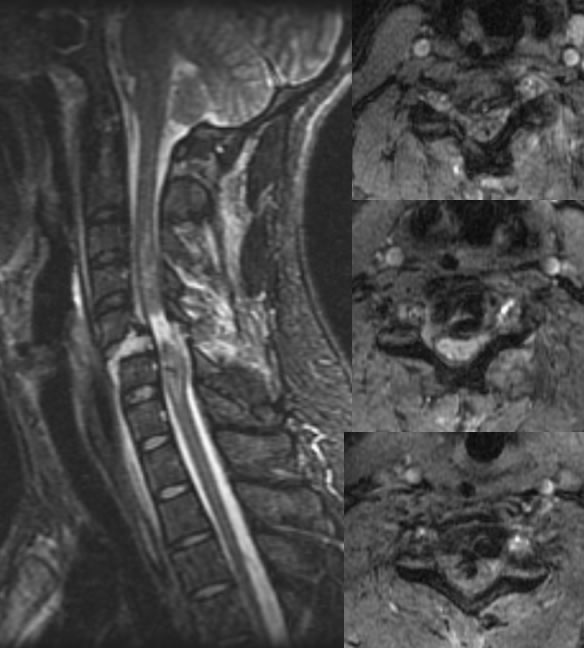
Cervical Cord Transection with C5 fracture
Findings:
Multiple MR images demonstrate marked widening of the C5-6 disk space which contains fluid signal, with disruption of the anterior longitudinal ligament. An avulsed fracture fragment is seen along the inferior margin of C-5. There is also a near CSF signal gap in the cervical cord at C5-6 with enlargement of the cord adjacent, indicating subtotal transection of the cervical cord. The axial gradient echo images demonstrate extensive hemorrhagic change within the disrupted ends of the cervical cord.
Discussion:
Cervical cord transection is best visualized on sagittal images as a CSF signal gap with retraction of the cut ends. In cervical cord injury, the neurological level is considered the most caudal cord segment with normal sensory and motor function bilaterally. The ASIA grading is utilized with ASIA A representing no motor or sensory function through the level of S4-S5. ASIA grade B indicates sensory but no motor function, with preservation of S4-S5. ASIA grade C indicates motor preservation below the sensory level, with 50% of muscle groups less than 3/5 strength. ASIA grade D indicates greater than 50% of muscle groups having greater than 3/5 strength. The Kulkarni classification provides grading of cord contusions. Type I is the most devastating injury with heterogeneous T1 hemorrhagic change. Type II indicates a non-hemorrhagic contusion which is most common and has a good prognosis. The type III injury is associated with central hyperintensity on T2, is uncommon, and has an intermediate prognosis.
BACK TO
MAIN PAGE

